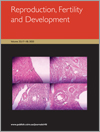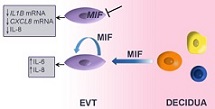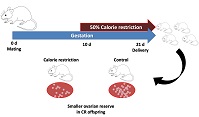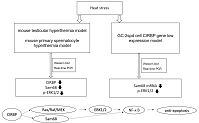Reproduction, Fertility and Development
Volume 32
Numbers 17 & 18 2020
Paracetamol use by pregnant and nursing women may affect development in their progeny. In this study we evaluated possible the effects of paracetamol on the liver and kidneys in rat dams and their offspring and detected no gross signs of toxicity. It appears that the hepatic and renal tissues in offspring are not susceptible targets after maternal exposure to therapeutic doses of paracetamol.
Paracetamol is considered the primary analgesic drug for use during all stages of pregnancy; however, this drug freely crosses the placenta and is transferred to the baby through breast milk. We evaluated whether maternal treatment alters the sexual development of female rat offspring. Paracetamol administered to dams affected sexual behaviour and reduced the follicle reserve of female rat offspring, suggesting that more studies are needed to provide information regarding the use of this drug by pregnant and nursing mothers.
Impaired invasion of specific placental cells known as extravillous trophoblasts into the maternal uterus can lead to pre-eclampsia, fetal growth restriction and other pregnancy pathologies. The MIF protein is found at the fetomaternal interface and regulates normal trophoblast invasion. This study shows that MIF achieves this through changes in cytokines that themselves modulate trophoblast invasion, not excluding other pathways of MIF action in the establishment and maintenance of pregnancy.
The size of the ovarian reserve in females is an important determinant of fertility and age at menopause. In this study in mice, calorie restriction during the last half of gestation reduced the size of the ovarian reserve in adult offspring. These findings bring new information regarding the origins of premature ovarian failure and fertility decline in older woman, indicating a role for intrauterine exposure to nutrients as a key factor.
Uncovering the molecular mechanisms of male reproduction is of great importance in life sciences and human health. In this study we explored the role of wild-type p53-induced phosphatase 1 (WIP1) in the proliferation of swine Sertoli cells. WIP1 regulated the proliferation of swine Sertoli cells by suppressing P53 phosphorylation. Our findings contribute new information regarding the molecular mechanisms of male reproduction.
Hot springs and occupational heat exposure such as professional drivers and welders are noticeable risk factors for male subfertility. This article explores the mechanisms of heat stress-induced testicular injury. We found that cold-induced RNA-binding protein can protect cells and reduce testicular injury caused by high temperatures. This provides new therapeutic directions for the study of male infertility.











